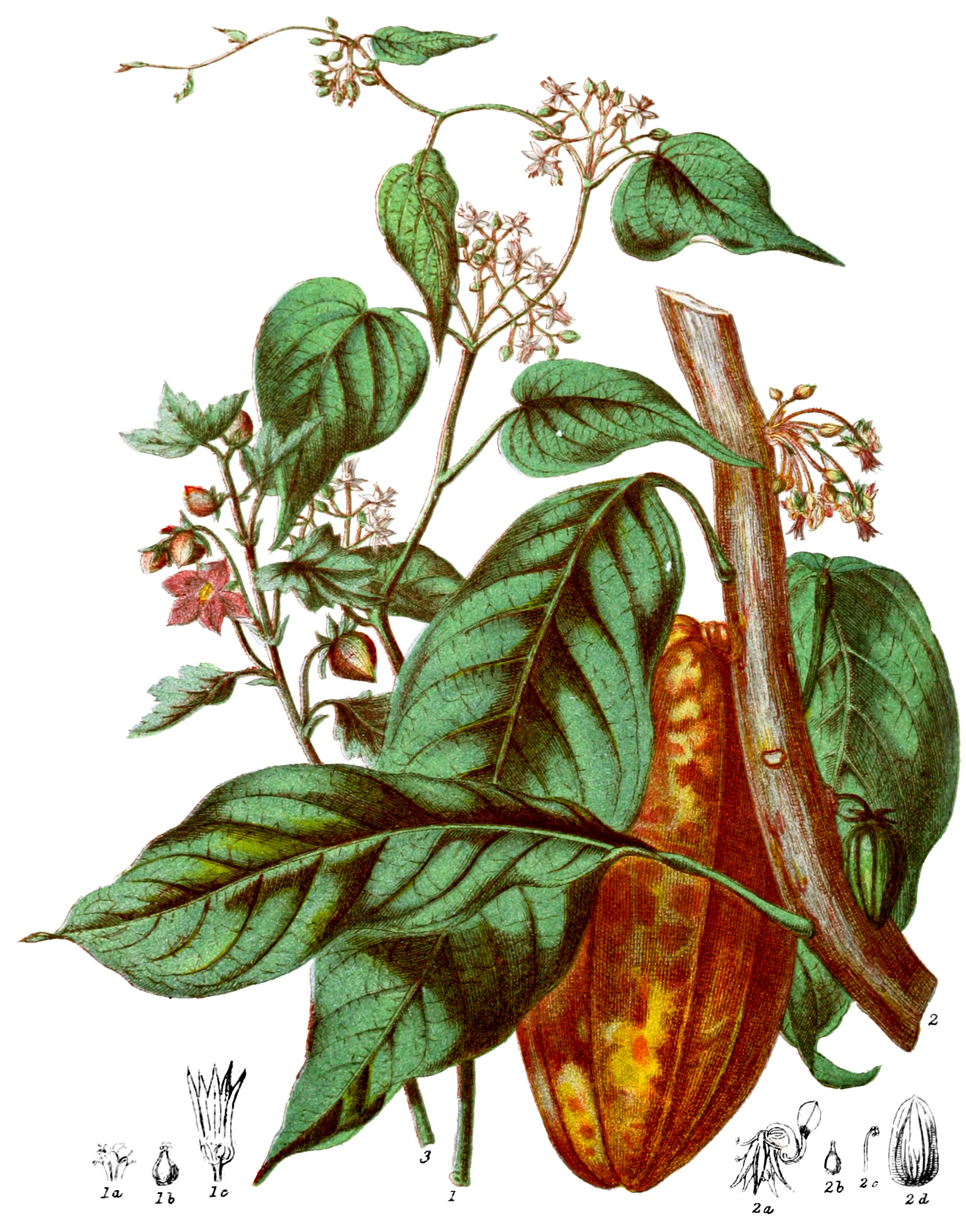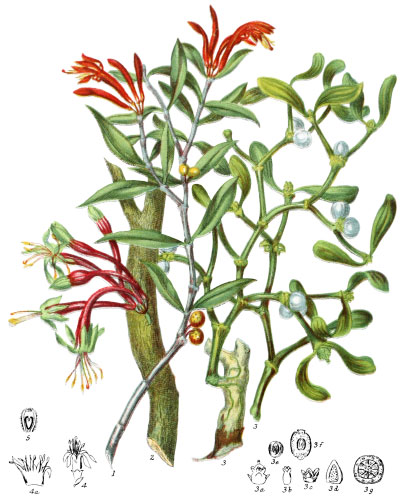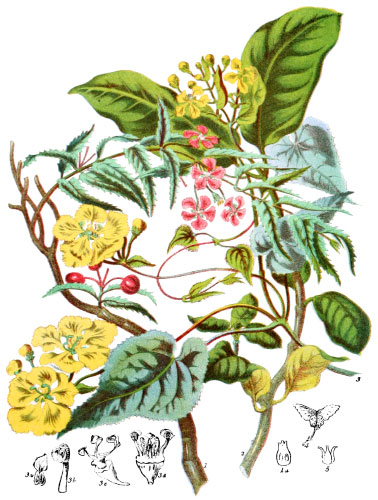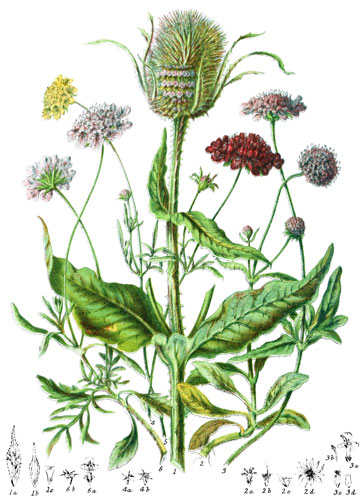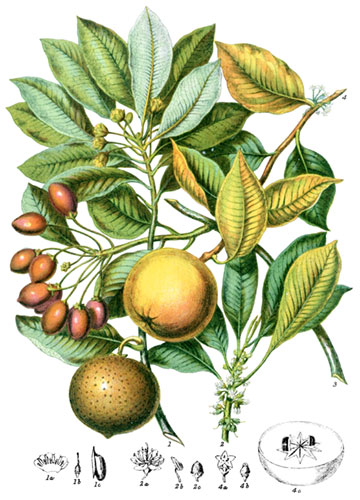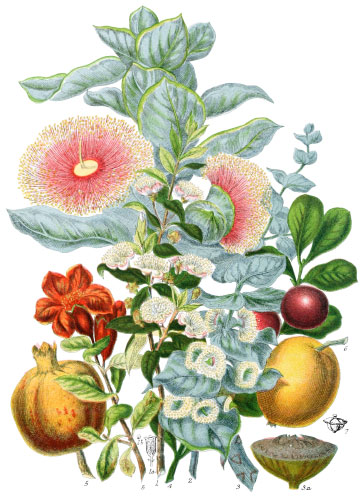Key characteristics
Trees, shrubs, and undershrubs, occasionally of a climbing nature, usually clothed with stellate or forked hairs. The leaves are alternate, simple, sometimes notched at the edges, occasionally having stipules which soon fall off. The flowers grow in clusters, spikes, or panicles. The calyx is herbaceous, membranous, or leathery, four or five-lobed. The petals are of the same number as the lobes of the calyx, twisted in the bud and flat, or arched and hollowed at the base, and lengthened at the point; either permanent or deciduous, often adhering to the tube of the stamens. In Lasiopetalum and others the sepals have the appearance of petals, and the petals are either minute scales, or wanting. The stamens are opposite the petals, sometimes imperfect stamens are placed between them, almost always united into a cup or tube; the anthers are turned inwards, two-celled, opening lengthwise, very rarely by a pore or cleft near the point. The ovary is free, sessile, or on a short stalk, composed of four to ten carpels arranged round the stigmas equal in number to the cells. The fruit is generally a capsule, splitting when ripe through the cells, or separating at the partitions; the seeds are sometimes winged, as in Pterospermum, containing always a small quantity of fleshy or mucilaginous albumen. The fibrous bark and mucilaginous properties of some plants in theis Order, connect it with the Mallow and the Linden tribes.
Select plants in this order
Not all plants listed are illustrated and not all plants illustrated are listed.
- Byttneria (1) was named after Büttner, Professor of Botany at Göttingen in the last century.
- B. microphylla is remarkable for the prickly stipules at the base of the leaf stalks.
- The most important tree of this tribe is Theobroma (2), so called by the Spaniards on their discovering its excellent qualities; large forests of it occur in South America, particularly in the hot damp valleys of Demerara, where it is one of the most verdant of the trees. It attains about sixteen feet in height, and bears flowers, fruit, and leaves throughout the year; so vigorous is its power of vegetation, that flowers spring out of the woody roots whenever they are uncovered by earth. The flowers are of singularly elegant shape, the petals form a hollow at the base in which the anther is concealed, the elongated point of the petals being bent upwards. The large fruit is full of creamy pulp, in which are about twenty-five seeds; these when ground are made into cocoa, or chocolate, a favourite Mexican beverage, much esteemed in all parts of South America and the West Indies for its nourishing properties, simple mode of preparation, and facility of conveyance; peculiarly valuable to travellers, whether on the extensive table-lands of the Andes, or in the vast uninhabited forests of Central America. An immense quantity is sent to Spain, where it is the daily food of all classes.
- Bubroma or Guazuma ulmifolia is a spreading tree of Jamaica, affording agreeable shade to cattle, and a wholesome fruit containing sweet mucilaginous pulp, of great value for them in the season of drought when all herbage is scorched. The bark of young trees is used in Martinique to clarify sugar, and the light wood is serviceable to the natives; the leaves, like the others of this tribe, droop during the night, while the leaf-stalks remain upright.
- The fruit of Abroma is said to be uneatable by either men or animals.
- Dombeya spectabilis yields a strong cordage in Madagascar; Microlæna and Abroma are of equally fibrous nature.
- Astrapæa is a noble evergreen, bearing large drooping heads of flowers of a splendid red colour.
- Kydia calycina is valued by the natives of India for its medicinal bark.
- Two species of Melhania produce the Red-wood and the Black-wood of St. Helena.
- Hermannia is a low shrub of no value, but several species are to be seen in conservatories with small downy wrinkled leaves, and numerous yellow flowers, the petals of which remain curiously folded over each other.
- The different species of Waltheria are natives of the East Indies and Brazil.
- Lasiopetalum (3) belongs to the division of this Order in which the coloured and usually downy calyx forms the apparent flower, the petals, if present, being minute scales; the anthers open by two small pores.
Locations
The different sections of this Tribe are dispersed in various regions of the world; some are limited to the Tropics, others belong to Temperate climates. Byttneria and its immediate allies are natives of Asia and America; Hermannia and others, of the Cape of Good Hope; Dombeya and a few more, of Africa and Asia; Eriolæna and others, of Asia; Philippodendron and others, of New Zealand; Lasiopetalum and other similar genera belong to Australia.
Legend
- Byttneria catalpæfolia, Catalpa-leaved Byttneria. Caraccas.
- Stamens and Nectaries.
- Pistil.
- Petals.
- Theobroma Cacao, Chocolate Nut Tree. South America.
- Nectaries, Stamens, and a Petal.
- Pistil.
- Stamen.
- Seed.
- Lasiopetalum grandiflorum, Large-flowered Lasiopetalum. Australia.
Explore more
Posters
Decorate your walls with colorful detailed posters based on Elizabeth Twining’s beautiful two-volume set from 1868.
Puzzles
Challenge yourself or someone else to assemble a puzzle of all 160 botanical illustrations.
